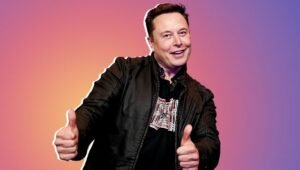Tesla is gearing up to test its cutting-edge driver assistance system in China and eventually introduce a robotaxi service. This was the main reason for Tesla CEO Elon Musk’s visit last month, where he met top Chinese officials.

As reported by China Daily, during his visit to Beijing last month, Musk reportedly sought approval from Chinese authorities to operate robotaxis in China, which would allow the American carmaker to conduct the required trials for its Full Self-Driving (FSD) system in the largest electric vehicle market globally.
According to the newspaper, Beijing is expected to grant Tesla the license in the hope that it will improve its souring economic ties with the US.
Reuters, citing informed sources, had earlier reported about Tesla’s plan to roll out its robotaxi service and test the FSD system in Shanghai.
Robotaxis, essentially driverless taxis, are a significant application of autonomous vehicles in urban settings. In China, companies like Baidu’s Apollo, Pony.ai, and WeRide have already secured approvals to test their autonomous driving tech in robotaxis in specific city zones like Beijing, Guangzhou, and Wuhan.
Independent industry analyst Gao Shen, based in Shanghai, told the South China Morning Post, “Testing FSD on robotaxis suggests Tesla hasn’t yet received full approval from Beijing to deploy autonomous driving technology commercially. However, for Chinese Tesla enthusiasts, robotaxis offers a chance to experience FSD, marking a promising beginning.”
Musk’s recent visit to Beijing, during which he met with Chinese Premier Li Qiang on April 28, has further fueled speculation that Tesla’s FSD software might soon receive widespread approval in China. In the US, Tesla offers its FSD software for a payment of $8,000 or for a monthly subscription fee of $99.
In an article penned for the People’s Daily on April 26, Grace Tao, Tesla’s Vice President of External Relations in China, emphasized the pivotal role of autonomous driving in propelling China’s electric vehicle sector forward. She highlighted how this technology is poised to usher in new business models, including robotaxis.
Analysts are now pondering whether Tesla will be permitted to transfer data gathered in China to the US to train its autonomous driving algorithms. This capability is crucial for unlocking the full potential of Tesla’s basic Full Self-Driving (FSD) features in Chinese-operated vehicles.
China has become Tesla’s second-largest market, witnessing 603,664 deliveries last year, just behind the US market, where the company handed over 654,888 units to American customers, marking a 25 percent surge from the previous year.
Amidst reports of a slowdown in domestic sales, Tesla is relocating Tom Zhu back to China, per sources cited by the Wall Street Journal. Zhu, who previously spearheaded Tesla’s China operations and played a crucial role in establishing Gigafactory 3 in Shanghai in 2019, was promoted to Senior Vice President in April 2023 to oversee global production, sales, and service from the company’s US headquarters.
According to data from the China Passenger Car Association, Tesla’s Shanghai factory delivered 62,167 Model 3 and Model Y vehicles to local and international customers in April, a 30 percent decrease from March and an 18 percent decline from the same period last year.
In the first four months of this year, the factory dispatched 283,043 vehicles, reflecting a 7.3 percent drop compared to last year.









